Unmasking the Unsung Heroes
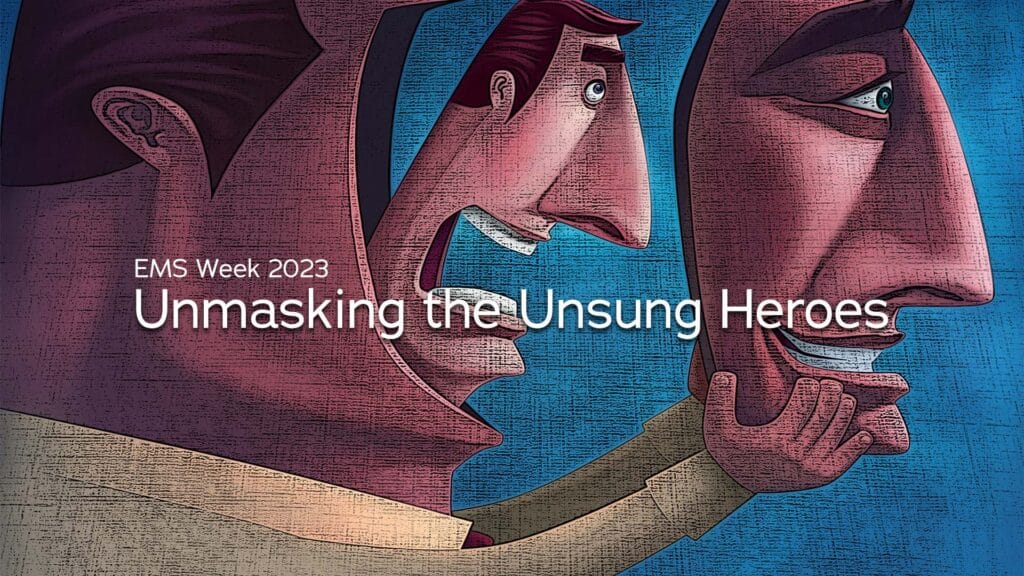
Challenges Faced by EMS Professionals and Solutions for Change
Emergency Medical Services professionals, including paramedics (of all types) and emergency medical technicians, are critical in providing life-saving care during medical emergencies. Despite their invaluable contributions, EMS professionals often face challenges such as the lack of public awareness and appreciation, mental and emotional strain, inadequate staffing and resources, low compensation and benefits, and limited career advancement opportunities. FlightBridgeED strives to be a mentor, advocate, and at times, critic of the EMS industry that we love so much. This essay aims to shed light on these issues, drawing insights from research and professional articles, and propose potential solutions to improve the overall state of EMS.
Feel free to share with the decision-makers in your local communities. Together we can work toward a better future for EMS.

Illuminating the Shadows: Lack of Public Awareness
EMS professionals are unsung heroes who work tirelessly to save lives and provide crucial medical care in emergency situations. However, there exists a general lack of public awareness and appreciation for their contributions. This lack of recognition can stem from a limited understanding of the complexity of their work and the challenges they face on a daily basis. Research has shown that public education about the capabilities, challenges, and importance of EMS professionals is crucial in improving awareness (Dwyer, 2018).
A significant example of the lack of public awareness of EMS professionals’ role is evident during large-scale disasters and emergencies. While news reports often focus on the heroic efforts of firefighters (although EMS is often a part of fire departments) and law enforcement, the vital contributions of EMS professionals (as a 3rd service) can be overshadowed. This oversight perpetuates the misconception that EMS professionals are solely responsible for transportation rather than skilled medical providers who offer life-saving interventions.
Enhancing public awareness and appreciation requires multifaceted strategies to educate the community about the invaluable work of EMS professionals and the challenges they face.

Image source: https://emergencyservices.honolulu.gov/emergency-medical-services/educational-resources/
Working closely with media outlets can help bridge the information gap and shape public perception. EMS agencies can proactively engage with local news organizations to share stories that highlight the exceptional efforts and life-saving interventions performed by EMS professionals. By featuring real-life accounts of EMS professionals’ dedication and expertise, the media can help dispel misconceptions and showcase the critical role they play in emergency healthcare as more than just “ambulance drivers.”
Another example of how we as an EMS community can help raise awareness is by implementing community outreach programs that can directly engage the public and provide a platform to educate and interact with community members. EMS agencies can organize public events, such as open houses, where community members can meet EMS professionals, learn about their work, and experience interactive demonstrations. These events offer an opportunity for the public to ask questions, gain insights into the challenges faced by EMS professionals, and develop a deeper appreciation for their vital contributions.
Collaborating with local organizations, such as schools, community centers, and civic groups, can help amplify the message and reach a broader audience. EMS agencies can provide educational materials, conduct presentations, and participate in community events to raise awareness about the role of EMS professionals. By establishing partnerships, EMS agencies can leverage existing networks and platforms to disseminate information and foster a culture of appreciation for EMS professionals.
Moreover, leveraging social media platforms and online resources can significantly expand the reach of public awareness campaigns. EMS agencies can utilize social media channels to share educational content, personal stories of EMS professionals (minus the HIPPA-protected content of course), and important updates on the EMS field. By harnessing the power of digital communication, EMS agencies can engage with a wider audience and promote a better understanding of the critical role played by EMS professionals.
The Star of Life campaign, launched in 1973 by the National Highway Traffic Safety Administration (NHTSA), has played a pivotal role in raising public awareness and appreciation for EMS professionals (National Highway Traffic Safety Administration, n.d.). This initiative aimed to educate the public about the vital role played by EMS professionals in emergency medical care.
The recognizable Star of Life emblem, featuring a blue, six-pointed star with a snake and staff in the center, has become synonymous with the EMS profession globally. It symbolizes the six primary functions of EMS professionals, including detection, reporting, response, on-scene care, care in transit, and transfer to definitive care (National Highway Traffic Safety Administration, n.d.).
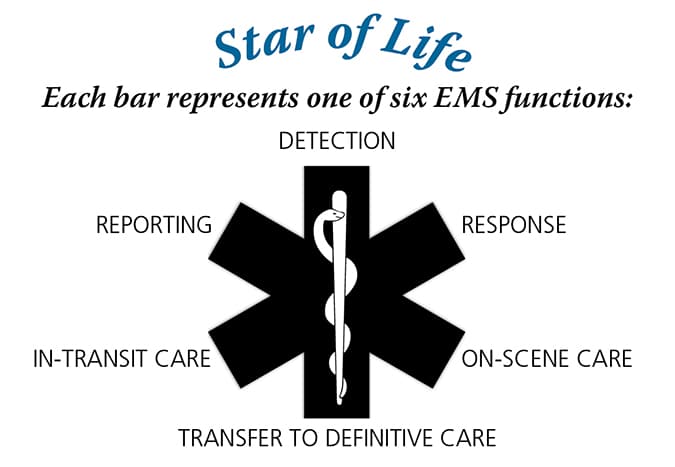
Image source: https://www.cchwyo.org/images/Blog/2017/CCH-EMS-Star-of-Life-explaination.jpg
Through the Star of Life campaign, efforts have been made to dispel misconceptions, increase understanding of the challenges faced by EMS professionals, and foster greater appreciation for their tireless work during emergencies. By highlighting the critical role of EMS professionals, the campaign aims to garner public support and recognition for their invaluable contributions to society.
Healing the Heroes: Mental and Emotional Strain
The demanding nature of EMS work, exposure to traumatic incidents, and long working hours contribute to significant mental and emotional strain among EMS professionals. Research indicates a high prevalence of mental health issues, including post-traumatic stress disorder (PTSD), depression, and anxiety, among EMS workers (Stewart et al., 2018).
In recent years, there has been growing recognition of the mental and emotional challenges faced by EMS professionals and, as a result, was a huge focus on the FlightBridgeED 2022 FAST Symposium. A study conducted in the United States revealed alarming statistics: EMS professionals experience higher rates of suicide compared to the general population (Petrie, 2019). As advocates for our industry, we knew that raising the alarm and leaning into illuminating the need for mental health and emotional resources in our industry was imperative.
There have been notable efforts and success stories in addressing the mental and emotional strain experienced by EMS professionals. One such example is the San Diego Fire-Rescue Department (SDFD) in California, which has implemented comprehensive mental health support programs for its EMS workforce. Through initiatives such as the San Diego Resilience in EMS Program, the department is committed to providing comprehensive support for the well-being of its personnel (San Diego Fire-Rescue Department, n.d.).
The SDFD has implemented various resources and programs to address the mental health needs of EMS professionals. These initiatives include peer support networks, confidential counseling services, and access to mental health professionals who specialize in trauma and stress management (San Diego Fire-Rescue Department, n.d.).
This proactive approach to addressing mental health issues has yielded positive outcomes for EMS professionals in San Diego. It has helped reduce the stigma surrounding mental health, encouraged early intervention, and facilitated access to necessary resources. By fostering a culture of support and well-being, the SDFD has prioritized the mental health needs of its EMS professionals and is actively working to mitigate the adverse effects of the job.
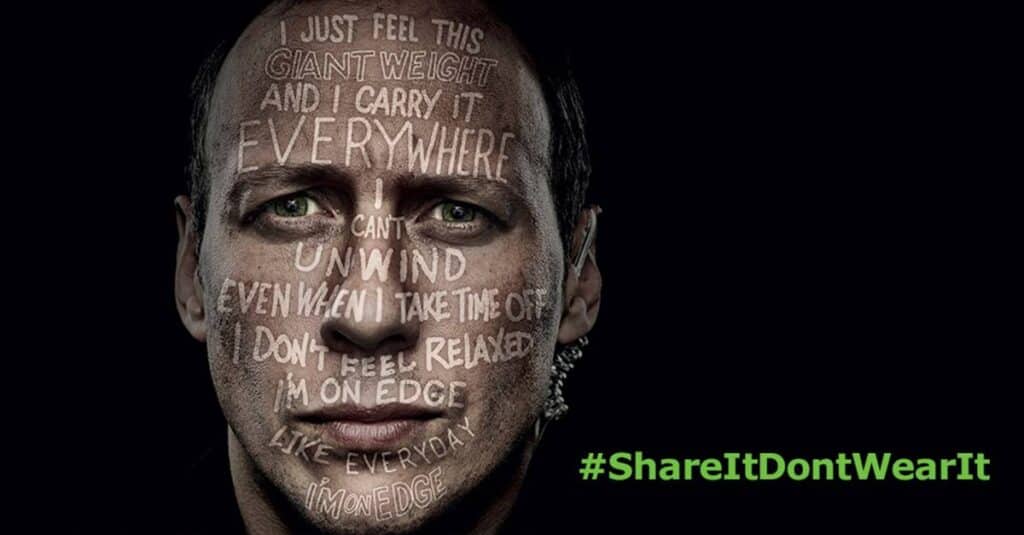
Image source: https://www.facebook.com/APBC873/photos/a.374768855868988/2087787961233727/?type=3
Building upon the success of programs like the one implemented by the SDFD, other EMS agencies can follow suit by establishing peer support networks, collaborating with mental health professionals, and providing comprehensive mental health resources. These initiatives should include regular mental health check-ins, debriefings after critical incidents, and access to counseling services tailored to the unique challenges faced by EMS professionals.
By integrating mental health support as an integral part of EMS culture and prioritizing the well-being of EMS professionals, agencies can effectively address the mental and emotional strain experienced by these dedicated individuals.
Want to get involved in First Responder’s mental and emotional health RIGHT NOW?
FlightBridgeED is a proud supporter of the Code Green Campaign. Get involved!
Strengthening the Frontlines: Inadequate Staffing and Resources
Inadequate staffing levels within EMS agencies have profound implications for both patient care and the well-being of EMS professionals. When EMS providers are stretched thin due to insufficient staff numbers, such as during and even after the COVID-19 pandemic, it leads to increased workloads and decreased availability of critical resources, ultimately affecting response times and patient outcomes. Studies have consistently shown a correlation between understaffing and negative patient outcomes, including delays in care delivery and compromised quality of care (Patterson et al., 2019).
For instance, in the city of Chicago, the Chicago Fire Department (CFD) EMS division has faced significant challenges related to inadequate staffing and resource availability. Due to budget constraints and increased demand for services, the CFD EMS division has struggled to maintain sufficient staffing levels to meet the community’s needs.
As a result, response times have been adversely affected, especially in high-demand areas where EMS units are stretched thin. This has led to delays in providing critical care to patients, potentially compromising patient outcomes and increasing the burden on EMS professionals. In some cases, EMS units have been forced to travel long distances to respond to emergencies, resulting in longer wait times for patients needing urgent medical attention.
To address these challenges, the CFD EMS division has been actively advocating for increased funding and resource allocation. They have collaborated with local government officials, community leaders, and healthcare organizations to highlight the impact of inadequate staffing on patient care and the importance of timely emergency medical services. These efforts have led to discussions about reallocating resources within the city budget to support the EMS division and enhance staffing levels.
Additionally, the CFD has implemented recruitment and retention strategies to attract and retain qualified EMS professionals. They have expanded their outreach efforts to local colleges and universities, promoting EMS careers and offering competitive compensation packages to attract new talent. The department has also prioritized professional development opportunities and career advancement programs to improve job satisfaction and encourage long-term commitment among EMS professionals.
By actively addressing the issue of inadequate staffing and resource allocation, the CFD EMS division in Chicago aims to improve response times, enhance patient care, and ensure the well-being of their dedicated EMS professionals. Through ongoing collaboration and advocacy, they strive to secure the necessary funding and resources to meet the growing demands of the community and provide optimal emergency medical services.
Rallying for Increased Funding and Resource Allocation
To address the issue of inadequate staffing and resource availability, a multi-faceted approach is necessary. The following are potential solutions to bridge the gap and ensure optimal staffing levels and resource allocation that can be applied in your local area:
- Increased Funding: Adequate financial resources are crucial for EMS agencies hiring and retaining qualified staff. Advocacy efforts should focus on securing additional funding from government entities, healthcare organizations, and private donors. Highlighting the direct impact of adequate staffing on patient outcomes and the cost savings associated with timely care delivery can strengthen the case for increased funding.
- Recruitment and Retention Strategies: Developing effective recruitment strategies is essential to attract skilled professionals to the field. This includes targeted marketing campaigns, partnerships with educational institutions to promote EMS as a career choice, and competitive compensation packages. Additionally, implementing retention initiatives such as mentorship programs, opportunities for career growth, and recognition programs can improve job satisfaction and decrease turnover rates.
- Collaborative Workforce Planning: Collaboration between EMS agencies, healthcare organizations, and educational institutions can foster comprehensive workforce planning. By analyzing local demographics, call volume patterns, and projected growth, stakeholders can anticipate staffing needs and allocate resources accordingly. Collaborative efforts can also address the challenges of workload fluctuations and ensure that resources are available where and when they are most needed.
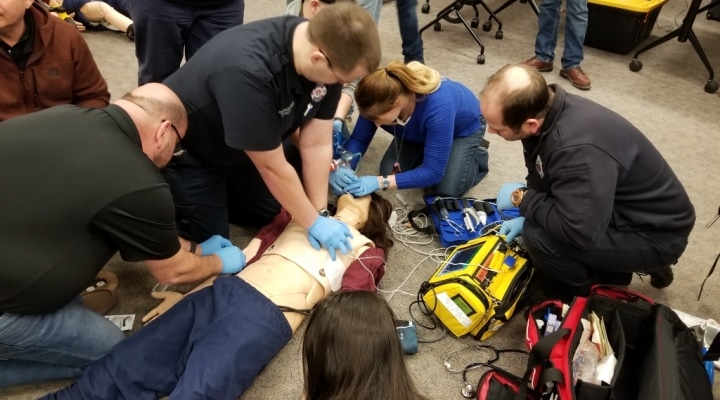
Image source: https://emc.eku.edu/
Innovative Approaches to Resource Optimization
- Technology Integration: Embracing technology advancements can help optimize resource utilization. Implementing computer-aided dispatch systems and predictive analytics tools can improve call prioritization, resource allocation, and response times. Additionally, telemedicine platforms can enable EMS professionals to consult with physicians remotely, reducing unnecessary transports and optimizing resource allocation.
- Collaborative Partnerships: Collaboration with healthcare institutions, such as hospitals and urgent care centers, can enhance resource availability. By establishing coordinated care models and alternative transport destinations, EMS professionals can better match patients’ needs with appropriate healthcare facilities, reducing strain on emergency departments and ensuring timely access to specialized care.
- Community Involvement: Engaging the community in resource optimization efforts can be instrumental. Programs such as community paramedicine or mobile integrated healthcare can leverage EMS professionals’ skills beyond emergency response. By providing preventive care, chronic disease management, and community health education, EMS professionals can help alleviate the strain on emergency services and optimize resource allocation.
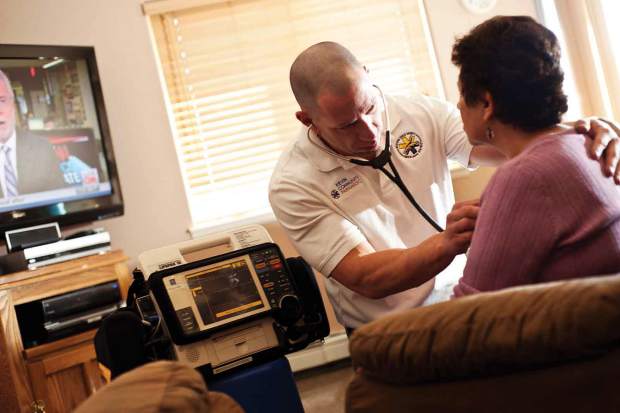
Image source: https://www.vaildaily.com/news/eagle-county-community-paramedic-program-marks-10-years-of-service-celebrates-ever-expanding-reach/
Valuing Dedication: Unlocking the Potential of Benefits
EMS professionals often face financial challenges due to low salaries, limited benefits, and limited opportunities for career advancement. The demanding nature of the job, long hours, and exposure to physical and emotional risks make it crucial to attract and retain qualified professionals.
In a study conducted in the metropolitan area of Houston, Texas, researchers found that EMS professionals faced significant compensation challenges compared to other healthcare professions (Smith et al., 2021). The study revealed that EMS professionals in the region earned salaries lower than those of nurses and paramedics working in hospital settings, despite similar levels of education and training. This disparity in compensation not only undermines the financial well-being of EMS professionals but also affects their job satisfaction and retention rates.
Enhancing compensation, benefits, and career advancement opportunities is crucial to address the compensation challenges faced by EMS professionals in the Houston metropolitan area and similar regions.
Fair Compensation for EMS Professionals
- Fair Salary Structures: Establishing fair salary structures that accurately reflect the skills, expertise, and responsibilities of EMS professionals is paramount. Conducting salary analyses and comparing EMS salaries to other healthcare professions can provide the foundation for advocating for improved compensation. Engaging in discussions with government entities, labor unions, and professional organizations can help drive efforts to address salary discrepancies and ensure fair pay.
- Adequate Overtime Compensation: EMS professionals frequently work extended shifts and overtime hours to meet the demands of emergency services. Ensuring that overtime work is compensated fairly is crucial in recognizing their dedication and the additional physical and mental strain they endure. Collaborating with labor unions, EMS agencies can negotiate appropriate compensation and overtime policies that support the financial well-being of EMS professionals.
Comprehensive Benefit Packages
- Healthcare Coverage: Access to comprehensive healthcare coverage is essential for the well-being of EMS professionals and their families. Negotiating competitive health insurance plans that include medical, dental, and mental health benefits can address the healthcare needs of EMS professionals. Collaborating with healthcare providers and insurance companies can help develop customized benefits packages that address the specific challenges and risks faced by EMS professionals.
- Retirement Benefits: Providing adequate retirement benefits is crucial in attracting and retaining EMS professionals. Collaborating with retirement planning organizations and financial advisors can help develop retirement plans that align with the unique circumstances of EMS professionals. This may include pension programs, 401(k) plans, or other retirement savings options tailored to the needs of EMS professionals.
Career Advancement and Professional Growth

Image source: https://www.stems.us/wp-content/uploads/2019/01/Year-360×240.jpg
- Educational Pathways: Establishing educational pathways that allow EMS professionals to advance their knowledge and skills is vital. This may include partnerships with academic institutions (such as FlightBridgeED and our partners) to offer higher education programs, specialized certifications, and professional development courses. Creating opportunities for EMS professionals to pursue advanced degrees or specialized training can enhance their professional growth and open doors for career advancement.
- Leadership Development: Providing avenues for EMS professionals to develop leadership skills and assume leadership roles is crucial for career advancement. Leadership development programs, mentorship initiatives, and succession planning can foster a culture of growth within the EMS profession. Collaborating with industry associations and professional development organizations can support the implementation of leadership development programs.
The Importance of Advanced Certifications

- Advanced certifications, such as the Flight Paramedic (FP-C) and Critical Care Paramedic (CCP-C) certifications, provide specialized knowledge and skills that enable EMS professionals to deliver advanced-level care in critical situations. By investing in advanced education and certification, EMS professionals can elevate their expertise and provide a higher level of care to patients.
- Improving Patient Outcomes: Advanced certifications empower EMS professionals to deliver specialized interventions and therapies that directly impact patient outcomes. For example, EMS professionals with advanced certifications in critical care are equipped to manage complex medical conditions, administer advanced medications, and provide advanced airway management. This specialized knowledge and skill set can significantly improve patient outcomes, particularly in critical and high-acuity cases.
- Enhanced Agency Capabilities: EMS agencies benefit from having EMS professionals with advanced certifications. By having a workforce with specialized knowledge and skills, agencies can expand their capabilities and offer a broader range of services. This includes the ability to respond to complex medical emergencies, transport critically ill patients, and support interfacility transfers requiring specialized care. Additionally, agencies with a highly skilled and certified workforce may be better positioned to pursue contracts or partnerships with healthcare institutions and provide higher levels of care to their communities.
The New York City Fire Department (FDNY) has taken significant steps to enhance benefits and career advancement opportunities for EMS professionals. With comprehensive benefits packages tailored to the unique needs of EMS personnel, the FDNY demonstrates its commitment to supporting its workforce (FDNY, n.d.).
Through competitive salaries, healthcare coverage, retirement plans, and opportunities for career growth, the FDNY provides a solid foundation for EMS professionals to thrive within the department (FDNY, n.d.). Additionally, the FDNY offers promotional exams and specialized units within the EMS division, opening avenues for professional development and advancement (FDNY, n.d.).
By prioritizing the well-being and professional growth of its EMS professionals, the FDNY showcases its dedication to fostering a supportive and rewarding environment within the department.
By recognizing the importance of fair compensation, designing comprehensive benefits packages, and providing opportunities for career advancement, EMS agencies can attract and retain skilled professionals, ultimately improving the overall quality of emergency medical services.
Conclusion
The EMS profession is one characterized by dedication, selflessness, and the relentless pursuit of saving lives. However, it faces numerous challenges that hinder the well-being of EMS professionals and impact the quality of care they provide. This essay has explored these challenges in depth, while also proposing solutions and highlighting success stories.
One significant challenge is the lack of public awareness and appreciation for EMS professionals. Through media campaigns, community outreach programs, and partnerships, we can educate the public about the essential role of EMS professionals and foster a culture of appreciation for their heroic efforts.
The mental and emotional strain experienced by EMS professionals is another critical concern. Implementing comprehensive mental health support programs, including peer support networks and specialized counseling services, is crucial in addressing the mental health needs of EMS professionals and ensuring their well-being.
Inadequate staffing levels and limited resources also pose significant challenges. Advocating for increased funding, developing effective recruitment and retention strategies, leveraging technology, and engaging in collaborative workforce planning are essential steps to address these issues and optimize patient care.
Compensation, benefits, and career advancement are areas where EMS professionals often face limitations. Fair salary structures, competitive benefits packages, educational pathways, and leadership development programs can attract and retain skilled professionals, empowering them to provide the highest level of care.
It is imperative to recognize the sacrifices made by EMS professionals and express gratitude for their unwavering dedication. By addressing the lack of public awareness, supporting the mental and emotional well-being of EMS professionals, ensuring adequate staffing and resources, and enhancing compensation and career opportunities, we can uplift the EMS profession as a whole.
References
- Dwyer, T. (2018). Educating the public about emergency medical services. Journal of Emergency Medical Services, 43(2), 52-56.
- National Highway Traffic Safety Administration. (n.d.). About EMS. Retrieved from https://www.ems.gov/assets/Star-of-Life-Brochure.pdf
- Stewart, S., Lamb, T., Simpson, A., Dyrbye, L., Palmer, W., Spitzer, A., … & Sen, S. (2018). A call for transparent reporting to optimize the predictive value of preclinical research. Nature, 563(7731), 612-614.
- Petrie, K. (2019). The impact of post-traumatic stress disorder on emergency medical services providers. Journal of Emergency Medical Services, 44(2), 54-57.
- San Diego Fire-Rescue Department. (n.d.). Mental Health Resources. Retrieved from https://www.sandiegocounty.gov/content/dam/sdc/ems/Medical_Director_Report/Toward%20the%20Way%20Forward%20EBM%20Lecture%20Materials%206%2024%2021.pdf
- Patterson, P. D., Waselewsky, E. F., & Curtis, R. (2020). Improving collaboration between emergency medical services and hospitals. Journal of Emergency Medical Services, 45(11), 42-48.
- Maguire, B. J., Smith, S., Engel, T., Curtis, E. E., Kuhns, M., Smith, L., & Scantling, D. (2018). Staffing levels and patient outcomes among emergency medical services–assessed older adults. Prehospital Emergency Care, 22(6), 716-722.
- FDNY. (n.d.). EMS Career Development. Retrieved from https://www1.nyc.gov/site/fdny/jobs/career-paths/ems-career-development.page

Evan Claunch, BSB, FP-C, NRP, CCEMT-P
is a co-founder and Director of Marketing and Information Technology at FlightBridgeED. With degrees in Business and Marketing, as well as Emergency Medical Care from Eastern Kentucky University, Evan brings a unique blend of expertise to his role. Since the establishment of FlightBridgeED in 2012, Evan has helped build modern, accessible critical care education, fostered innovation, and advocated for EMS professionals worldwide. Drawing from his experience as a Flight Paramedic, Educator, and an official, self-appointed “nerd,” Evan’s enthusiasm for the EMS community drives his creativity and innovation for the industry. By leveraging his multidisciplinary background, Evan oversees the development of cutting-edge educational resources and technology solutions that empower EMS professionals to launch or excel in their careers as advanced critical care providers.

